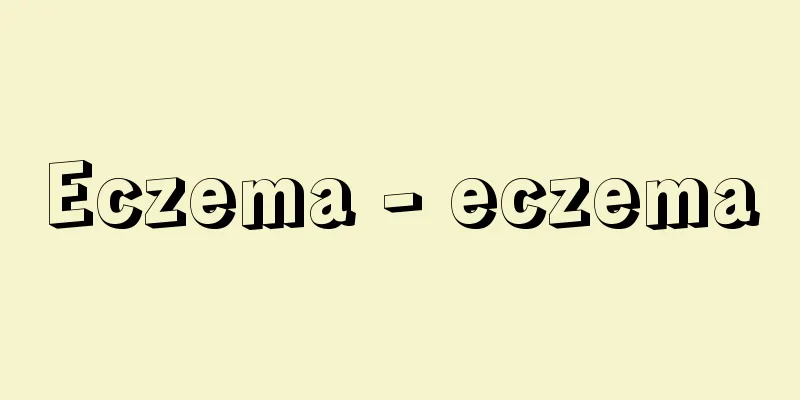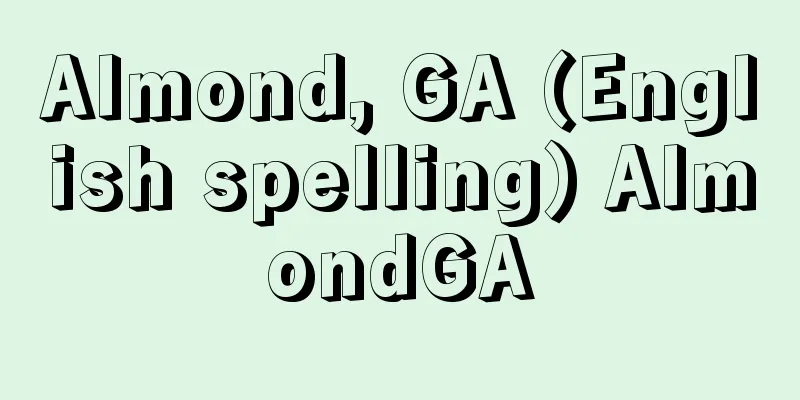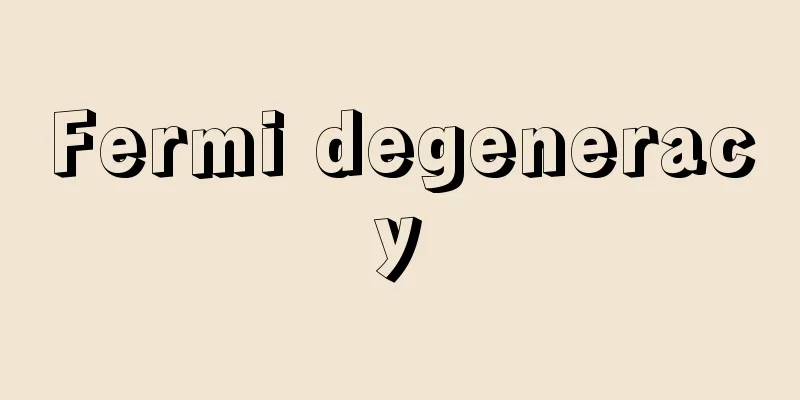Eczema - eczema

|
It is the most common inflammation of the skin surface, accounting for about one-third of outpatient visits to dermatologists. There are 10 major types. For this reason, what was previously simply called eczema is now lumped together under the term eczema disease or eczema/dermatitis group. Eczema is broadly divided into acute and chronic types, depending on the nature of the inflammation. Acute eczema generally presents with prominent dermatitis symptoms and subjective severe itching. The general course of the disease is that it begins with erythema, accompanied by some inflammatory edema, with an unclear border (erythematous stage). As the disease progresses, papules form on the erythema (papular stage), and as exudative changes occur, small blisters form on the tops of the papules (vesicular stage). As inflammatory symptoms increase, the number of erythema, papules, and blisters increases. Some of the vesicles turn into pustules (pustular stage), and when the vesicles and pustules break, they open up and cause ulcers (erosive stage), and the pus, serous fluid, and blood on the ulcerated surface dry up and form lumps (eschars), forming scabs (eschar stage). As the inflammatory symptoms subside and healing progresses, the scabs fall off and dandruff-like scales appear (desquamating stage), resulting in complete healing without leaving any scars. However, the progression of acute eczema does not necessarily follow the above order in a regular manner, and the same patient may experience differences in the stages depending on the area. The progression also varies slightly depending on the type of eczema. Chronic eczema is characterized by infiltration, thickening, and lichenification of the lesions, and is accompanied by varying degrees of itching due to the inflammatory symptoms, which often lead to subsequent lichenification when the patient scratches or rubs the lesions. The causes of eczema are complex and diverse, but the direct causes can be broadly divided into external and internal factors. The main eczema diseases include the following: (1) Atopic dermatitis is a general term for eczema that develops in people who have an atopic constitution, such as those who are prone to asthma, allergic rhinitis, urticaria, hay fever, etc., or who have family members who are prone to such conditions. As symptoms vary slightly depending on age, there are three types: infantile type, childhood type, and adult type. (2) Eczema due to physical causes There are cases of allergic and non-allergic causes. The so-called cracked and chapped skin caused by cold or cold wind, and the so-called prickly heat (miliaria eczema) caused by high temperatures and humidity can also be considered as a type of eczema due to physical causes. (3) Primary irritant dermatitis: This is an eczematous lesion that can occur in anyone due to the direct action of an irritant, not due to an allergy. Examples of primary irritant dermatitis include acute dermatitis caused by acids and alkalis such as hydrochloric acid and sodium hydroxide, acute dermatitis caused by irritants such as mustard, housewives' eczema caused by soap and detergents, and occupational dermatitis caused by kerosene, gasoline, cement, etc. (4) Allergic contact dermatitis: This is known as contact eczema, or a rash, along with primary irritant dermatitis. It is a common type of eczematous disease, and occurs when foreign substances from outside the body, such as plants, paints, dyes, chemicals, and metals, act on the skin as antigens (allergens), and people become sensitized (allergic) to these substances. It is also called eczematous contact dermatitis or contact eczema. (5) Bacterial eczema Eczema involving bacteria is clinically classified into three types: Type 1 is fissured eczema that causes cracks in the attachment area behind the ear and intertriginous eczema that occurs on the anterior neck and under the breasts, Type 2 is eczema that develops after the area around the lesion is contaminated for a certain period of time by pus that has flowed out from otitis media or a boil, and Type 3 is desquamated eczema that tends to occur around the mouth or eyes. (6) Seborrheic dermatitis This is a type of dermatitis that occurs in seborrheic areas where sebum is secreted in large amounts. It usually begins on the head where hair grows, and gradually spreads to the forehead, behind the ears, and back of the head, and can also appear in the sternal area, interscapular area, axilla (armpit), umbilicus (navel), and pubic hair area. It occurs most frequently at ages when sebaceous gland function is increased, such as one month after birth, puberty, and menopause. Possible causes of seborrheic dermatitis include sex hormone imbalance, stress, vitamin B complex deficiency, and abnormalities in commonly occurring bacteria and fungi. (7) Nummular eczema As its name suggests, it is characterized by the formation of coin-sized, extremely itchy circular lesions. It is commonly seen in winter and autumn, and is most commonly found on the limbs, especially the lower legs, but it can also occur over a wide area, such as the back. If it becomes chronic, it is prone to dissemination throughout the body, and even if it is cured, it is prone to recurrence. (8) Autosensitization dermatitis If localized skin ulcers or chronic eczematous primary lesions are treated with inappropriate ointments, scratched, or infected with pyogenic bacteria, eczematous lesions may suddenly appear around the primary lesion, and later in distant areas. This phenomenon is called autosensitization, and when multiple lesions appear almost symmetrically all over the body, it is called generalized or disseminated eczema. Primary lesions include burns, trauma, surgical wounds, leg ulcers, and nummular eczema. (9) Endogenous eczema: This type is caused by endogenous factors such as food or drugs, and is characterized by the symmetrical development of eczematous lesions such as erythematous papules and serous papules, and by a tendency to be more or less generalized. (10) Lichen Vidal This is a type of eczema that begins with pruritus and develops with scratching playing an important role, resulting in the formation of lichenified lesions with clearly defined boundaries. The most common sites of development are the nape and sides of the neck. It is also called lichen simplex chronicus or localized neurodermatitis, and is most commonly seen in women aged 30 to 50. Treatment of eczema varies slightly depending on the type, but a common theme is that mild cases can be cured by simply rubbing in a cream or ointment containing a corticosteroid. Severe cases require application of a topical medication (or patch) followed by covering with gauze or a bandage, and the use of oral antihistamines or antiallergic drugs, and in severe cases, the use of oral corticosteroids. For seborrheic dermatitis, oral administration of vitamin B2 or B6 is required, and for nummular and bacterial eczema, topical application of a corticosteroid cream or ointment containing antibiotics may be required, and in severe cases, antibiotics may be required in addition to the oral medications mentioned above. Autosensitization eczema and generalized eczema (disseminated eczema) are the most severe types of eczema, so it is important to see a dermatologist as soon as possible. [Masakatsu Izaki and Seiichi Izaki] [References] | | | | | | | | |©Shogakukan "> General course of eczema Source: Shogakukan Encyclopedia Nipponica About Encyclopedia Nipponica Information | Legend |
|
もっとも多い皮膚表面の炎症で、皮膚科外来患者の約3分の1を占める。おもなものだけでも10種類を数える。このため、従来、単に湿疹と称していたのが、いまは湿疹性疾患、あるいは湿疹・皮膚炎群の呼称のもとに一括されるようになった。 湿疹は炎症の性質によって急性型と慢性型に2大別される。急性型湿疹は一般に皮膚炎の症状が著明で、自覚的に激しいかゆみを有する。一般的経過としては、まず紅斑(こうはん)をもって始まり、多少の炎症性浮腫(ふしゅ)を伴い、境界は不明確である(紅斑期)。ついで病勢が進み、紅斑上に丘疹(きゅうしん)を形成し(丘疹期)、滲出(しんしゅつ)性変化がさらに加わると、丘疹の頂上に小水疱(すいほう)を形成する(小水疱期)。炎症症状がますます加わると、紅斑、丘疹、小水疱は増加する。小水疱は一部膿疱(のうほう)となり(膿疱期)、小水疱と膿疱が破れると、ただれてびらん面を生じ(びらん期)、びらん面上の膿、漿液(しょうえき)、血液などが乾燥してかたまり(結痂(けっか))、かさぶた(痂皮(かひ))が形成されるようになる(結痂期)。炎症症状が消退して治癒に向かうと、かさぶたが脱落し、ふけのような鱗屑(りんせつ)を生じ(落屑期)、瘢痕(はんこん)を残さないで完全治癒する。しかし、急性型湿疹の経過はかならずしも以上の順を追って規則正しく経過するものではなく、同一患者についても部位によって症期の差異がみられる。一方、湿疹の種類によっても経過に多少の違いがある。 慢性型湿疹は、病巣の浸潤、肥厚、苔癬(たいせん)化を特徴としており、炎症症状によって種々の程度にかゆみを伴い、患者が病巣をひっかいたり、こすることによってしばしば苔癬化を続発する。 湿疹性疾患の原因は複雑多岐であるが、直接の原因は外因と内因に大別される。 おもな湿疹性疾患として、次のようなものがあげられる。 (1)アトピー性皮膚炎 本人あるいは家族に、喘息(ぜんそく)、アレルギー性鼻炎、じんま疹、枯草(こそう)熱などがおきやすい、いわゆるアトピー性体質を有する者に発症した湿疹の総称で、年齢によって症状を多少異にするので、乳児型、幼小児型、成人型の3型に区別されている。 (2)理学的諸原因による湿疹 アレルギー性の場合と非アレルギー性の場合がある。寒冷や寒風による、いわゆるひび・あかぎれ、高温・多湿が誘因となって生ずる、いわゆるあせも(汗疹性湿疹)なども、一種の理学的原因による湿疹と考えてよい。 (3)一次性刺激性皮膚炎 アレルギーによらないで、刺激物の直接作用によってだれにでも生ずる湿疹性病変である。塩酸や水酸化ナトリウムなど酸・アルカリによる急性皮膚炎、からしなど刺激物質による急性皮膚炎、せっけん、洗剤類などによる主婦湿疹、および灯油、ガソリン、セメントなどによる職業性皮膚炎がこれに属する。 (4)アレルギー性接触皮膚炎 一次性刺激性皮膚炎とともに接触型の湿疹、いわゆるかぶれとして知られる。湿疹性疾患のなかでも頻度の高い種類で、植物、塗料、染料、化学物質、金属など体外の異物が抗原(アレルゲン)として皮膚に作用し、このような物質に感作(かんさ) された(アレルギー状態になった)人に生じる。湿疹性接触皮膚炎あるいは接触湿疹ともよばれる。 (5)細菌性湿疹 細菌が関与する湿疹で、臨床的には次の3型に区別される。第1型は耳介後面付着部などに亀裂(きれつ)(ひび割れ)を生ずる亀裂性湿疹ならびに前頸部(けいぶ)や乳房下面に生ずる間擦性湿疹(間擦疹)、第2型は中耳炎や癤(せつ)(おでき)などがあって流出した膿汁によって病巣周辺がある期間汚染されたのちに発症する湿疹、第3型は口囲または眼囲に好発する落屑性湿疹の3型である。 (6)脂漏性皮膚炎 皮脂の分泌が多い脂漏部位におきる皮膚炎である。多くは毛髪の生える頭部に始まり、しだいに前額部、耳後部、後頭部に拡大し、胸骨部、肩甲間部、腋窩(えきか)(わきの下)、臍部(さいぶ)(へそ)、陰毛部にも発現する。生後1か月、思春期、更年期の脂腺(しせん)機能が亢進(こうしん)する年齢に好発する。性ホルモンのアンバランス、ストレス、ビタミンB複合体の欠乏、常在菌である細菌や真菌の異常などが原因として注目されている。 (7)貨幣状湿疹 その名の示すように、かゆみの強い貨幣大で円形の病巣を形成するのが特徴で、冬と秋によくみられ、好発部位は四肢とくに下腿(かたい)であるが、背部など広範囲に生じることもある。慢性に経過すると、その経過中に全身に散布現象(播種(はしゅ))をきたしやすく、また治癒しても再発しやすい。 (8)自家感作性皮膚炎 限局性の皮膚潰瘍(かいよう)や慢性湿疹性原発巣があって、その経過中に不適当な軟膏(なんこう)療法や掻破(そうは)(かきむしる)などの刺激、あるいは化膿菌による感染症が加わると、はじめ原発巣の周囲、のちにはかけ離れた遠隔部位にも、急激に湿疹性病巣が生ずることがある。この現象を自家感作といい、特に全身にほぼ対称的に多数の病変が生じる時には汎発(はんぱつ)性湿疹あるいは播種性湿疹とよぶ。原発巣としては、熱傷、外傷、手術創、下腿潰瘍、貨幣状湿疹などがある。 (9)内因性湿疹 食物や薬物などの内因性のものが原因で、紅色丘疹や漿液性丘疹などの湿疹性病変が対称性に発生することと、多少なりとも汎発傾向を示すことが特徴である。 (10)ビダール苔癬 皮膚瘙痒(そうよう)症に始まり、掻破が重要な役割を演じて発症する湿疹で、境界の明確な苔癬化病巣を形成する。項部(うなじ)や側頸部が好発部位である。慢性単純性苔癬あるいは限局性神経皮膚炎ともよばれ、30~50歳のとくに女性に多くみられる。 湿疹性疾患の治療は、その種類によって多少異なるが、共通していえることは、症状の軽い場合は副腎(ふくじん)皮質ホルモン剤含有クリームまたは軟膏を擦り込むだけで治る。症状の重い場合は、外用薬を塗布(または貼布(ちょうふ))後、ガーゼや包帯でおおうなどし、内服薬として抗ヒスタミン剤や抗アレルギー剤の併用、重症のときには副腎皮質ホルモン剤の併用も必要である。また、脂漏性皮膚炎に対してはビタミンB2やB6の内服を行い、貨幣状湿疹と細菌性湿疹については、抗生物質を含有した副腎皮質ホルモン剤クリームまたは軟膏の外用と、重症例には前記の内服薬のほかに抗生物質を必要とする場合がある。自家感作性湿疹・汎発性湿疹(播種性湿疹)はもっとも重症の湿疹であるので、皮膚科専門医に早めに診察を受ける必要がある。 [伊崎正勝・伊崎誠一] [参照項目] | | | | | | | | |©Shogakukan"> 湿疹の一般経過 出典 小学館 日本大百科全書(ニッポニカ)日本大百科全書(ニッポニカ)について 情報 | 凡例 |
<<: Decimal system - decimal system
Recommend
Lagothrix flavicauda (English spelling) Lagothrixflavicauda
… [Kuroda Suehisa]. . . *Some of the terminology ...
Detoxification - Gedoku (English spelling)
This refers to a certain biochemical reaction tha...
Leonotis leonurus (English spelling) Leonotisleonurus
…[Ichiro Sakanashi]. … *Some of the terminology t...
Hoof (hoof) - hoof (English spelling)
A sturdy shoe-like claw found in large herbivorous...
Winston-Salem
An industrial city in central North Carolina, USA....
Mr. Shibuya
A medieval samurai family whose main territory was...
Great silver butterfly - Great silver butterfly
A butterfly belonging to the family Nymphalidae, ...
Pressure Act - Pressure Information Act
...It can be applied to both evergreen and decidu...
Ley Lerdo (English spelling)
The Law on the Dissolution of Perpetual Property ...
Open field culture
A farming method in which crops are grown in open ...
Hou‐ch'ong (English spelling)
A Silla tomb from the Three Kingdoms period locate...
Hollow Brick
…Bricks were widely used in the ruins of palaces ...
Chandas
…In contrast, there is the Smṛti (sacred traditio...
Toshi no Ichi (year-end market) - Toshi no Ichi
This is a market held at the end of the year, and ...
Li Tong (English spelling)
1093‐1163 A Chinese thinker from the Southern Song...







![Tetsunishi [town] - Tetsunishi](/upload/images/67cc43f7ef722.webp)

